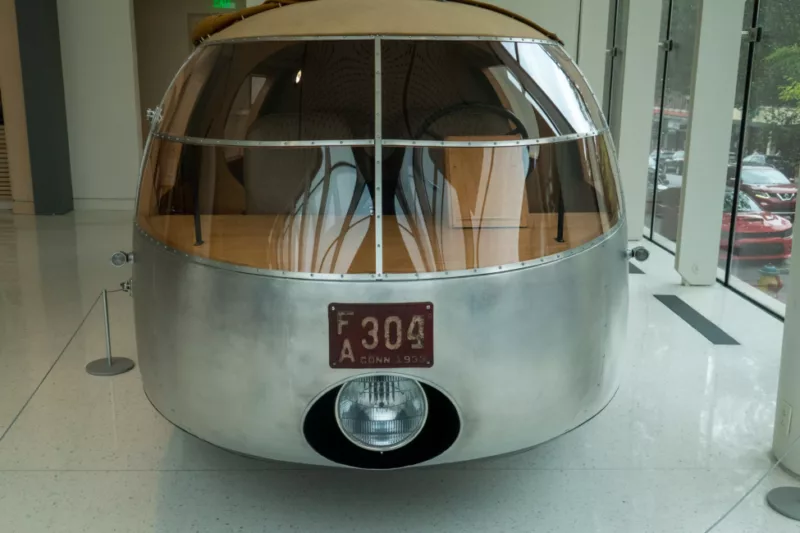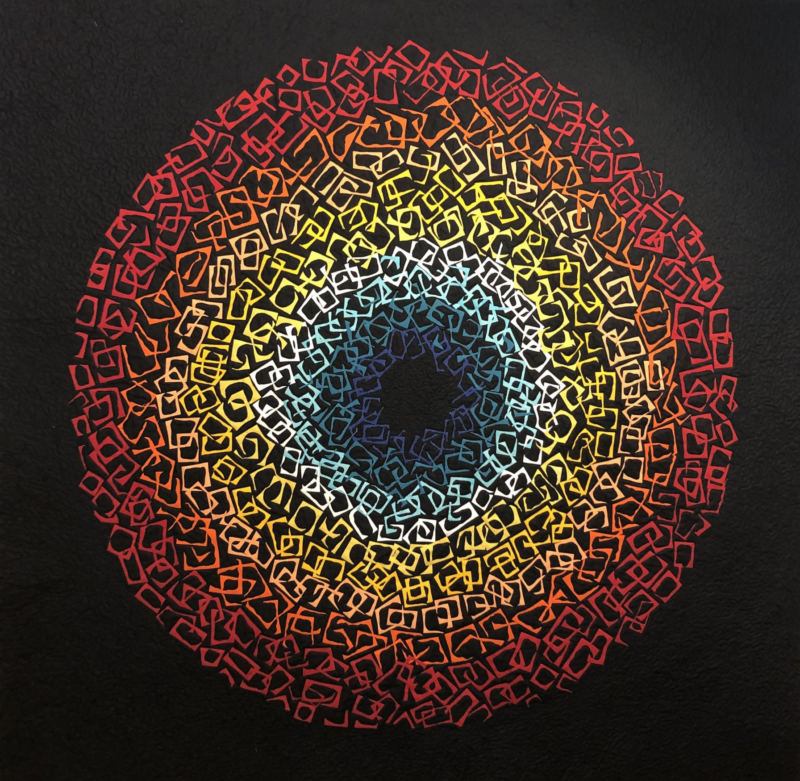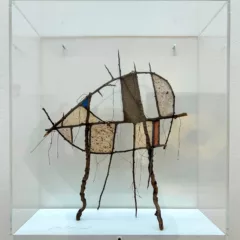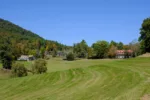
Photo by Blaise Tobia.
Asheville, NC, is popularly known as a center for fine art but, currently, its art scene is clearly more influenced by the nearby Penland School of Craft than by the legacy of the legendary art school at Black Mountain College. (During its heyday in the 1950s, Black Mountain was an outpost for New York City’s artistic Avant Garde.) Both in the blue-chip galleries and the alternative spaces in the River District, crafts –- especially ceramics and glass –- reign supreme. Much of the work is of very high quality, but the orientation is more towards high-end home décor than towards artistic statement.
Thus, it was a surprise to discover that the Asheville Museum of Art is something of a gem. Its featured exhibition was an excellently curated and presented survey of the Pattern/Decoration movement and its special exhibition was a well-researched and documented look at the theoretical work of Buckminster Fuller.
The exhibition Too Much is Just Right – the Legacy of Pattern and Decoration was extensive. While a portion of the show was dedicated to work from the 1970s-80s by some of the movement’s central figures (Valerie Jaudon, Robert Kushner, Joyce Kozloff, Miriam Schapiro) it also featured a great variety of other artists, many of whom would not normally be thought of as pattern/decoration practitioners, including both nationally known fine artists and artists based more in craft traditions – with some from the Asheville area.
Indeed, the museum may have been interested in doing a pattern/decoration show because, in many ways, the pattern and decoration movement always represented a synthesis of craft and fine-art. While Jaudon and Kushner worked exclusively in paint, echoing the patterns of cloth, Kozloff and Schapiro brought actual cloth into their work, sometimes even quilting. From their precedent, it’s not a far reach to some of the more recent collaged and quilted works in the exhibition. One of these, in particular, that stood out to me, was a quilt piece by Cathy Fussell entitled “Event Horizon.” I mention it not only because is smart and beautiful, but because it is an example of how high craft – contrary to the home décor approach – can engage important concepts (in this case astrophysics, black holes, and the fate of the universe).

Courtesy of the artist
A similar observation could be made regarding ceramics. There is definitely a segment of ceramists who can indeed be termed “artists” rather than artisans, and several were featured in the show. Among these were two Philadelphia-based artists, Peter Olson and Roberto Lugo, both of whom use elegant ceramic vessels as a ground: for photographic imagery, in the case of Olson, and for painted imagery in the case of Lugo. (To add to the Philadelphia connections, also included was a piece by Howardena Pindell – born and raised here and, in her teens, a part-time student at several of its best art schools.)
Among the works in the show by nationally recognized fine artists, some of the standouts were by Kehinde Wiley (one of his portraits with an overlaid scrim of decorative plants), Mickalene Thomas (whose large 3D collage was used by the museum on its invitation for the exhibition) and Baltimore-based Joyce Scott (a recent MacArthur fellow, whose deceptively pretty bead works raise issues of racism and violence).
In addition to the excellence of the exhibition, seeing it turned out to be one of those memorable experiences that is more likely to occur in a small regional institution than in a major museum. The museum guard turned out to be well informed and affable and, discovering that we had close connections to some of the exhibited artists, took us over to meet the curators of the show, who happened be present. A great conversation then ensued.
Unfortunately, the Pattern and Decoration show has closed (as of May 29) but the Buckminster Fuller show will be open until August 21. It includes two major suites of prints by Fuller, interpretive models of some of his proposals and inventions built by students at the University of North Carolina – Asheville, and a working full-scale replica of Fuller’s visionary aerodynamic Dymaxion car, placed prominently in the museum lobby. Not coincidentally, Fuller taught at Black Mountain College (see intro paragraph) in 1948-49.
Asheville Art Museum, 2 South Pack Square, Asheville, NC 28801









